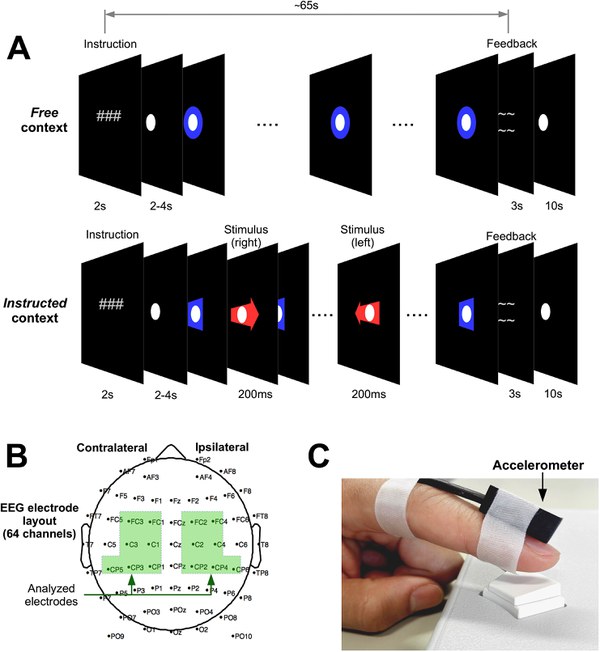Freely chosen and instructed actions are terminated by different neural mechanisms revealed by kinematics-informed EEG
Neurophysiological accounts of human volition are dominated by debates on the origin of voluntary choices but the neural consequences that follow such choices remain poorly understood. For instance, could one predict whether or not an action was chosen voluntarily based only on how that action is motorically executed?
We investigated this possibility by integrating scalp electroencephalograms and index-finger accelerometer recordings acquired while people chose between pressing a left or right button either freely or as instructed by a visual cue.

Even though freely selected and instructed actions were executed with equal vigor, the timing of the movement to release the button was comparatively delayed for freely selected actions. This chronometric difference was six-times larger for the β-oscillations over the sensorimotor cortex that characteristically accompany an action's termination. This surprising modulation of an action's termination by volition was traceable to volition-modulated differences in how the competing yet non-selected action was represented and regulated.

Publication:
Viswanathan, S., Wang, B.A., Abdollahi, R.O., Daun, S., Grefkes, C., & Fink, G.R. (2018).
Freely chosen and instructed actions are terminated by different neural mechanisms revealed by kinematics-informed EEG
. NeuroImage, 188, 26-42.Correspondence to:
